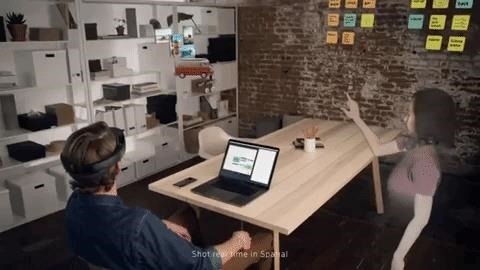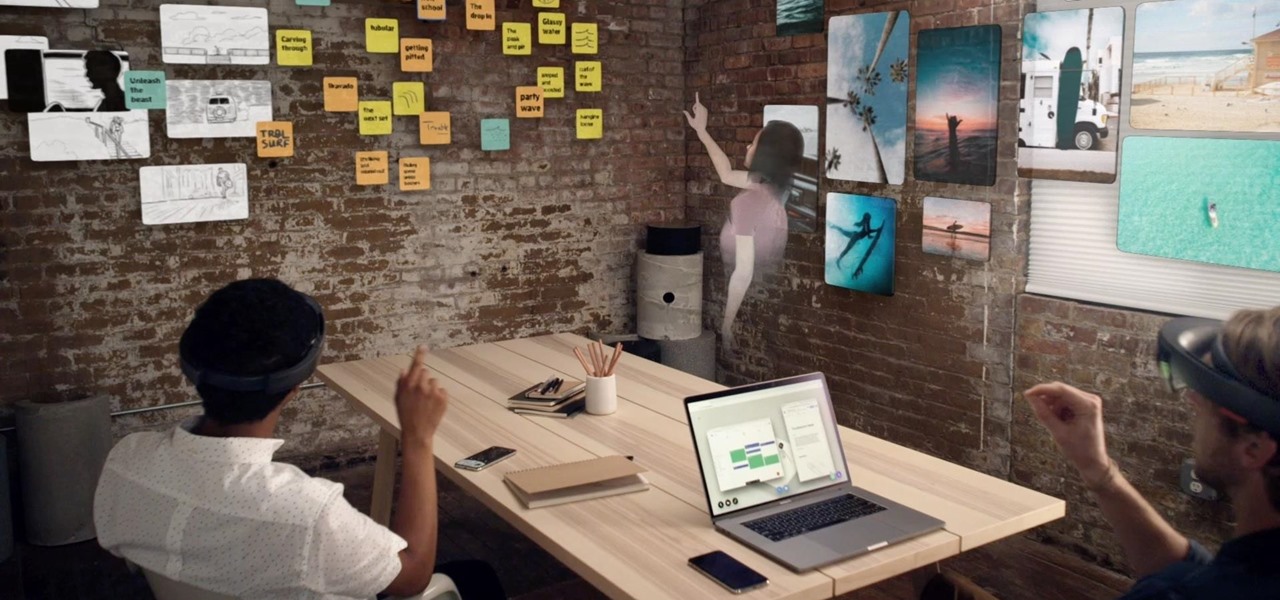Last week, Twilio showed off how avatar-based chat communications will work on the Magic Leap One, and now a new startup has unveiled yet another way that augmented reality telepresence and remote collaboration can take place on the device.
Emerging from stealth on Wednesday, startup Spatial introduced its eponymous app that turns any room into a virtual workspace where co-workers can interact with virtual content remotely via the Magic Leap One and the HoloLens, as well as VR headsets Oculus Rift and HTC Vive.

With Spatial, instead of working through an agile scrum in the same workspace, Magic Leap One users can interact through a virtual array of sticky notes and collaborate with remote colleagues, represented by realistic avatars that emulate video conferencing as opposed to the cartoon-like versions provided through the Avatar Chat app.
- Don't Miss: Onshape Partners with Magic Leap to Bring Its Collaborative Industrial 3D Design Tool to AR
The Spatial app also gives users the ability to instantly transfer documents and images from PC, Mac, iPhone/iPad, and Android mobile devices into the virtual environment. For instance, designers can take a snapshot of a hand-drawn sketch on their smartphone and share it with others in the digital workspace. We've seen this kind of trick before via the Meta Workspace for Meta 2.

In terms of technology and interface design, the company has the pedigree to build an AR collaboration app. Co-founders Anand Agarawala and Jinha Lee previously founded BumpTop, a company devoted to developing an open-space 3D desktop. Google acquired the company in 2010, and the duo went on to work on Google's Material Design ethos.
Lee also designed and developed SpaceTop, an AR workspace for holographic displays and the predecessor of Spatial (as shown in the video embedded below).
"We are harnessing the power of augmented reality to create a combined digital and physical world that will change the way we work together," said Agarawala, who serves as CEO of Spatial, in a statement. "With Spatial, collaboration becomes an immersive 3D experience where you can express ideas visually by just saying them, organize thoughts in the room around you and never let space confine your work."
Spatial already has one high profile customer: Ford X, an internal technology incubator at Ford, is deploying the app in a pilot program to connect its distributed workforce. The company has already shown its proclivity for AR collaboration through an automobile design app for HoloLens.

"With Spatial, we are moving from the era of personal computing to collective computing where people can share their space and ideas from anywhere, on any device," said Lee, who acts as Spatial's CPO.
In addition to unveiling its app, Spatial announced that it has closed an $8 million seed funding round, with iNovia Capital, Garrett Camp with Expa, Samsung Next, Joi Ito, Mark Pincus, and Andy Hertzfeld among the investors.
"Spatial has built the most advanced augmented reality platform available today," said Todd Simpson, Partner at iNovia Capital. "This is game-changing technology that will undoubtedly advance the future of work, and more broadly, the future of computing."

Samsung's participation in the funding round is particularly interesting, considering that the company is reportedly working with Microsoft on a hybrid AR/VR headset. Spatial's technology may serve as a foundation for that headset's AR experience.
"In Spatial, we are betting on a vision for AR that was far beyond anything we had tried at the time we invested. We also are betting on a pair of supremely talented founders in Anand and Jinha who are early pioneers in the field of 3-D computing, with both having given legendary TED talks on the subject, and who have been instrumental in building such interfaces at Google and Samsung respectively," said Jacob Loewenstein, manager of business development and product strategy at Samsung NEXT in a blog post. "In short, we saw the opportunity to invest in, and learn from, a world-class UI/UX design team at the cutting edge of augmented reality and three-dimensional computing."
The enterprise segment of augmented reality consists of basically two types of apps at present: hands-free workflow guidance, which displays documentation and step-by-step instructions in a workers' field of view, and live video communications, which enables users to share their camera view with remote experts, who can then annotate the feed for additional support.
Spatial combines these concepts and looks to improve upon the overall experience. Aside from the innovative approach to remote collaboration, the app also expands the addressable use cases of enterprise AR from front-line workers in industrial settings to other work functions, such as product design and cross-department planning. It may also enable companies with far-flung offices to reduce travel costs and still bring various role players into a collaborative environment in a way that is more natural than video conferencing and screen sharing.
Companies interested in taking the next step in remote collaboration can signup via Spatial's website.
Just updated your iPhone? You'll find new features for Podcasts, News, Books, and TV, as well as important security improvements and fresh wallpapers. Find out what's new and changed on your iPhone with the iOS 17.5 update.























Be the First to Comment
Share Your Thoughts